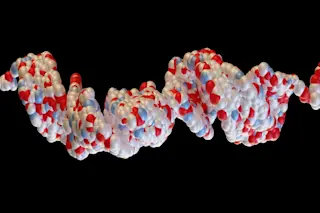Nearly 37 million people have human immunodeficiency virus (HIV), the cause of AIDS. The go-to treatment for the infection, antiretroviral therapy (ART), can prevent the disease’s progression, allowing people to live longer and healthier lives. But even with ART, the virus still lingers in the body by copying itself into the DNA of infected cells.
This year, researchers described a new form of ART which, in combination with CRISPR gene editing, eradicated the virus during testing on mice — a big step toward new therapeutic avenues for HIV patients.
To mimic a human infection in mice, the researchers used “humanized mice,” which make human immune cells, rather than mouse immune cells. These human cells are susceptible to HIV. When the team injected the mice with the virus, they saw the infection take up residence in the places it would in humans: in DNA in cells in the lymph nodes, spleen, ...















